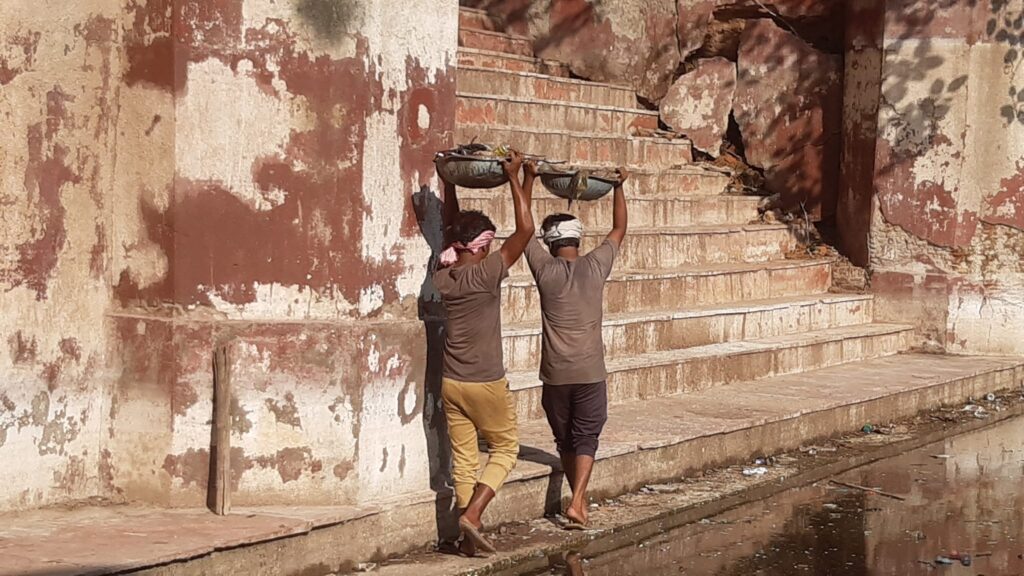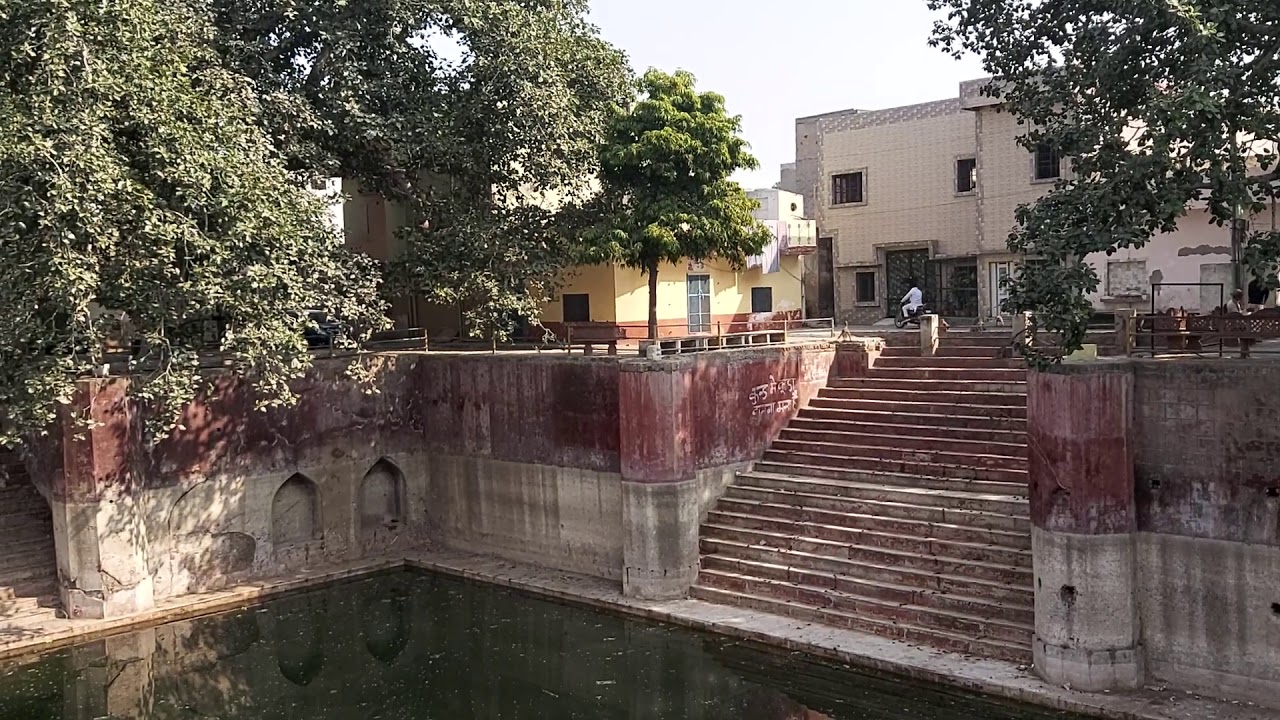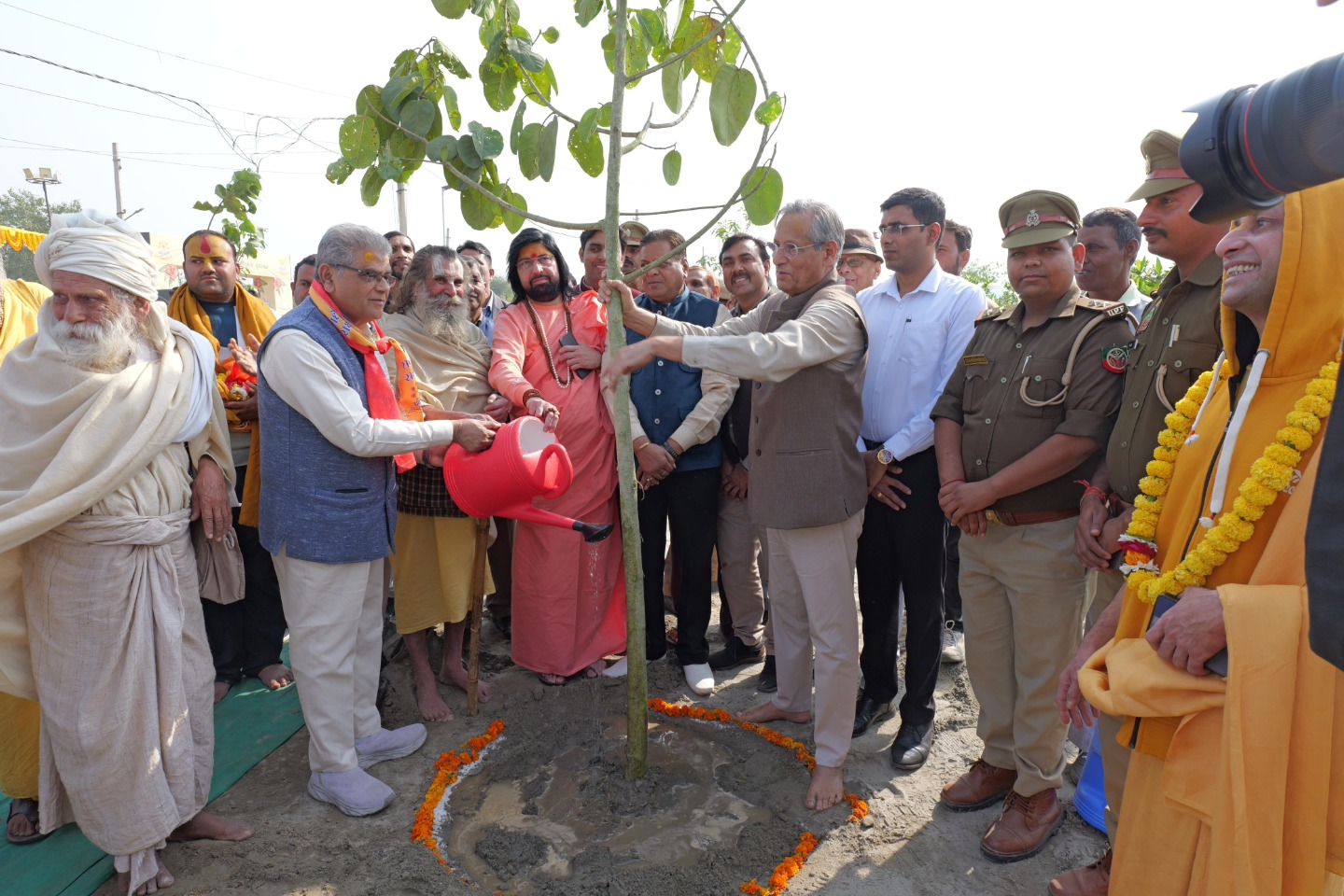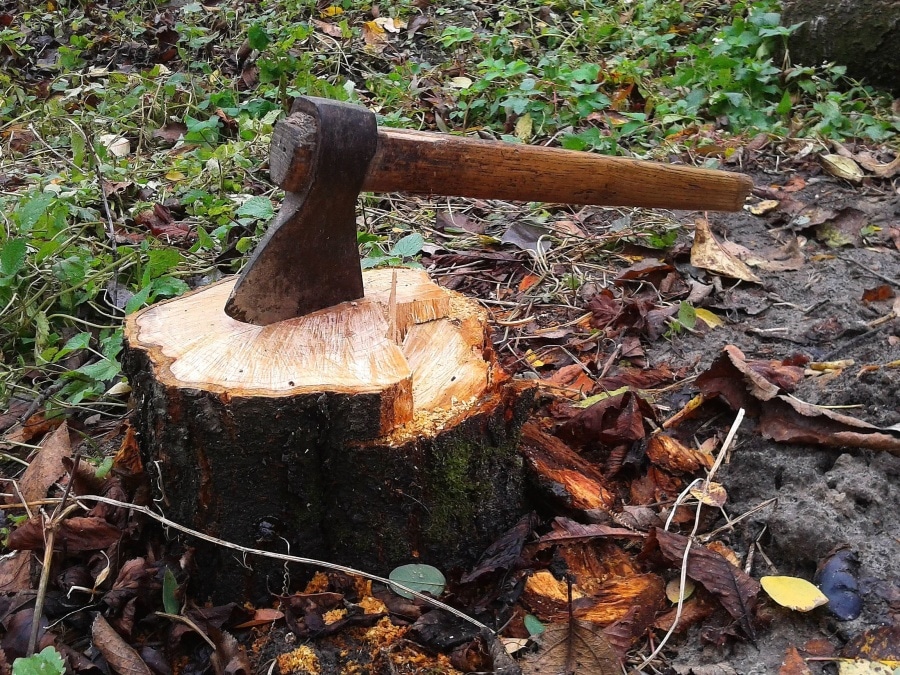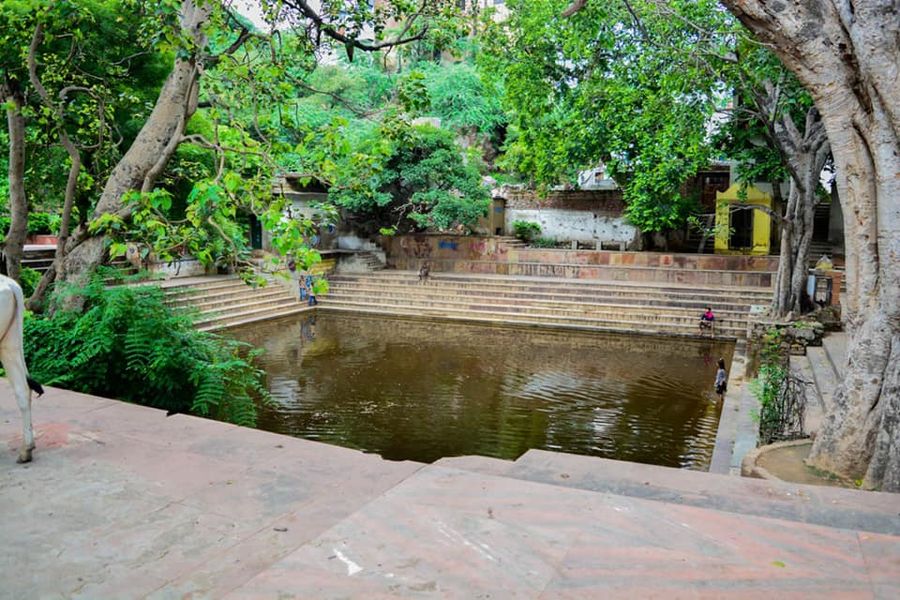The kund will be filled with clean water, the steps and ghats will be restored with the traditional mortar of lime and sand.
2023-04-21 (Vrindavan Today News): The 500 year old Davanal Kund is up for a revamp. The restoration work of the kund will be completed in four months under the joint efforts of the Datri Foundation and INTACH. NGO Friends of Vrindavan is also involved in this initiative to locally oversee the project.
The Indian National Trust for Art & Cultural Heritage (INTACH), New Delhi has begun to restore the Ancient Davanal Kund of Vrindavan on Friday. The restoration work began amid the Vedic Chants and rituals in the august presence of Acharya Shrivatsa Goswami ji Maharaj of Shri Radharaman Temple.
According to the plan the ‘Kund’ will be de-silted to open up the aquifers to fill it up with naturally sweet water. The steps and the ghats of the Kund that has developed cracks will be restored by using sand, stone and lime.
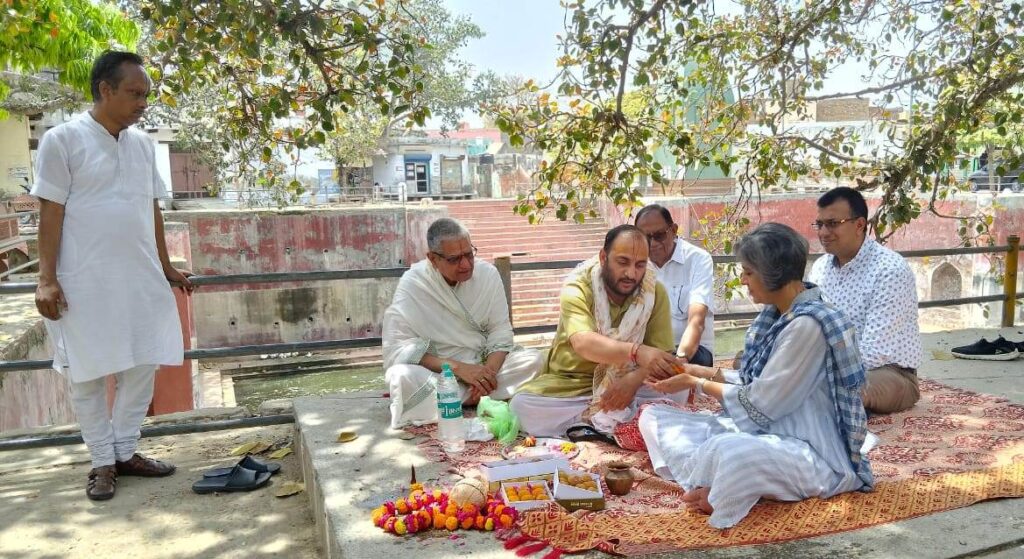
This kund is religiously significant as it was made to commemorate Shri Krishna’s lila of swallowing a blazing forest fire that threatened the lives of Brajavasis. The word davanala means ‘forest fire’. Despite such a glorious history, the Davanal Kund has remained in an abject state of neglect. The current state of the kund is very filthy, with a strong foul smell.
A water channel, locally known as ‘Vrindavan Miner’ used to feed several water bodies including Davanal Kund till late 20th Century. The real estate boom in last two decades encouraged encroachment on government lands. The channel of ‘Vrindavna Miner’ had also fallen prey to the greed of the real estate mafia. Several illegal colonies were built unabated on the land from where the water channel passed. The water collected and stored in the tanks from the miner was another source of groundwater recharge apart from the Yamuna. The irrigation of the gardens and groves were highly dependent on the water of this channel. Several of these water tanks were dried up when the water from the channel feeding them. Some of the tanks are no longer present while the rest are now plagued with problems. The Davanal Kund is one of those water bodies which were entirely dependent on the channel till last century.
Acharya Shrivatsa Goswami ji Maharaj said, “Yamuna was the major source of drinking water in Vrindavan, which recharged the perennial spring of the ponds, wells and the kunds. Now there is no fresh water available in Yamuna as it has become excessively polluted. Due to the haphazard concretization in the city, Yamuna can’t recharge the ground water anymore.”
“The Kunds were the perennial source of fresh water in Vrindavan. The declining ground water table has forced the kunds to dry up. The sensible use of fresh water and filling the kunds with rainwater during the monsoon is the only way forward to conserve these water bodies,” added Shri Goswami ji.
Talking to ‘Vrindavan Today’, Mrs. Katyayani Agrawal, Founder Trustee of the Datri Foundation said that project will be completed in two phases. The first phase will focus on the restoration of the steps and the ghats with the traditional lime and sand based mortar. The much damaged stone will be replaced with the new red sandstone.”
“Once the stone work is completed then the de-silting process will begin. We shall try to uncover the blocked aquifers for the natural source of fresh water. We will also encourage the rain water harvesting in this area to fill the kund,” added Katyayani who is also a Governing Body Council Member of the INTACH.
Mrs. Katyayani Agrawal further informed that the Davanal Kund restoration and revitalization project is supported by Mr. & Mrs. Rawat and family. She was specially thankful to Shri Shailjakant Misra, the Vice Chairman of Uttar Pradesh Braj Teerth Vikas Parishad for his intervention in facilitating the permission to restore the kund.
According to the Datri Foundation sources the beautification of the kund will be done after the restoration. The beautification of the kund will be done by installing the images of the ‘Davanal lila’ of Shri Krishna carved in the stone. A small theatric stage may also be built near the kund in later stage for cultural events.
